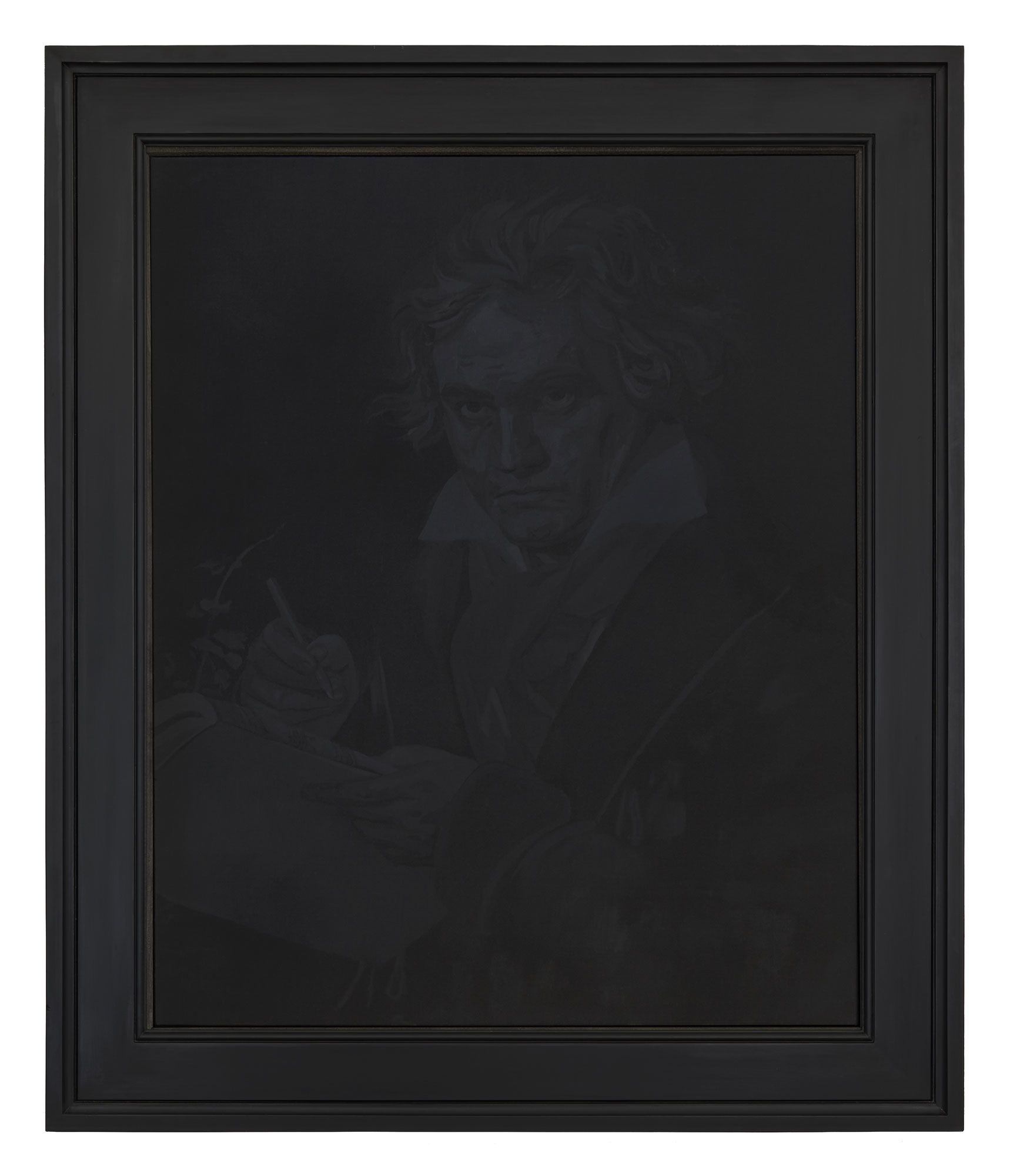These are portraits of absence. In each Credo, the same figure begins to emerge - the unmistakable likeness of Beethoven, drawn from Joseph Karl Stieler’s 1820 painting. But where Stieler captured the composer mid-creation, surrounded by Romantic landscape and radiant colour, here the image is submerged in black. Detail is withheld. Light is rationed.
Across the series, small variations unfold - differences in contrast, tone, and density - but the effect is constant: a near-erasure that invites not just looking, but searching. Faces flicker. Forests fade. The score in Beethoven’s hand - the Credo of the Missa solemnis - hovers like a phantom, barely legible.
These are not homages. They are distillations. Stripped of vibrancy and placed behind reflective museum glass, the portraits become encounters - the viewer’s image mirrored into the frame. What was once a symbol of genius is now a surface of return. A black mirror that absorbs the gaze and offers it back.
What remains is less a man than a moment: the solitude of listening, the hush before belief, the fragile intensity of something once certain - and now, quietly, unresolved.
Exhibited:
Credo, Beethoven Haus Bonn 2015.
Beethoven im Blick moderner und historisher Kunst - Kulturhaus Zanders Bergisch Gladbach, Germany. 2015.
LUDWIG VAN : Le Mythe Beethoven Philharmonie de Paris. Paris. 2016.
The Times they are a–changing. Galerie Bastian, Berlin. 2018.
Hotel Beethoven, Bozar Brussels. 2020 ,




